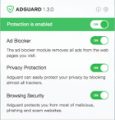What is AssistiveMode
According to security professionals, AssistiveMode is a malicious application that belongs to the Adware group . By definition, adware is a piece of software that shows advertisements on computers. However, people basically use the word ‘adware’ to describe a form of malware that presents unwanted ads to the user. Most commonly, this kind of software do not have any uninstall procedures and can use technologies that are similar to those used by malicious software to penetrate the MAC system.
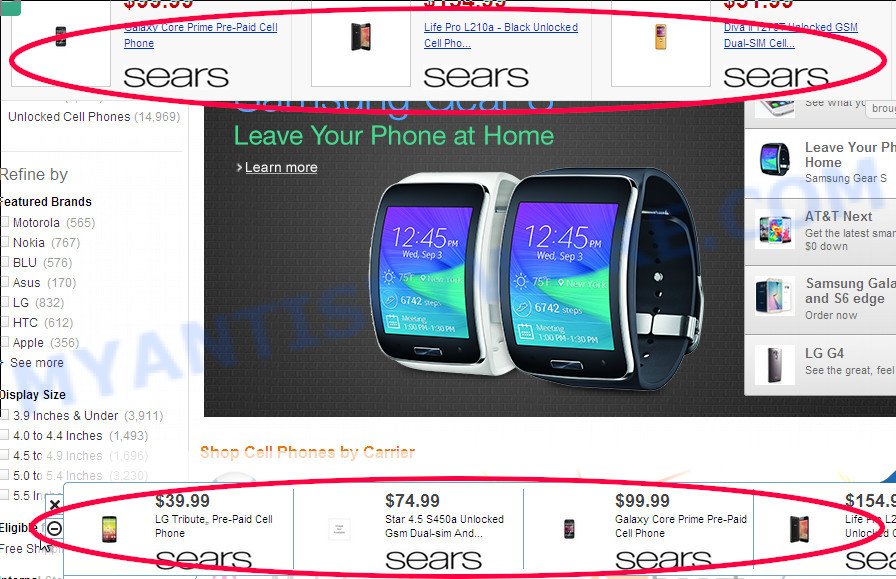
Unwanted ads
Does adware steal your privacy data? The AssistiveMode adware can analyze the location and which Internet websites you visit, and then present advertisements to the types of content, goods or services featured there. Adware software creators can gather and sell your browsing information and behavior to third parties. Therefore it is very important to follow the steps below as soon as possible. The steps will assist you to get rid of AssistiveMode as well as clean your internet browser from any unwanted advertisements. What is more, the few simple steps below will allow you remove other malicious applications such as undesired toolbars and browser hijackers which can be installed onto computer along with the adware.
How does AssistiveMode get on your MAC system
Adware software gets on Mac computers as a part of various free applications. This means that you need to be very careful when installing software downloaded from the Internet, even from a large proven hosting. Be sure to read the Terms of Use and the Software license, choose only the Manual, Advanced or Custom install method, switch off all optional modules and software are offered to install.
Threat Summary
| Name | AssistiveMode, AssistiveMode 1.0 app |
| Type | adware, potentially unwanted program (PUP), Mac malware, Mac virus |
| Detection Names | Adware.MAC.Generic, Program:MacOS/Vigram.A, Osx.Adware.Cimpli, MacOS.Agent-MT, ApplicUnwnt, OSX.Trojan.Gen, Adware/Adload!OSX and Trojan-Downloader.OSX.Adload |
| Distribution | Freeware installers, torrent downloads, shady popup advertisements and fake update tools |
| Symptoms | Your browser is redirected to web-sites you did not want, unclosable window appear and recommend fake Jave updates, your machine starts automatically installing unwanted programs, unwanted web-browser toolbars, your internet browser search provider has replaced without your permission, low ping but slow Internet. |
| Removal | AssistiveMode removal guide |
How to remove AssistiveMode
Without a doubt, the adware is harmful to your computer. So you need to quickly and completely get rid of the AssistiveMode adware. To remove this adware, you may use the manual removal tutorial which are given below or free malicious software removal utility such as MalwareBytes Anti-Malware (it is free). We recommend you use automatic removal way which will help you to uninstall the adware easily and safely. Manual removal is best used only if you’re well versed in MAC system or in the case where adware software is not removed automatically. Read it once, after doing so, please bookmark this page (or open it on your smartphone) as you may need to close your web-browser or restart your MAC.
To remove AssistiveMode, use the steps below:
- Remove profiles created by AssistiveMode
- Uninstall AssistiveMode associated software by using the Finder
- Remove AssistiveMode related files and folders
- Scan your Mac with MalwareBytes
- Remove AssistiveMode from Safari, Chrome, Firefox
- How to stay safe online
Remove profiles created by AssistiveMode
AssistiveMode can make changes to the Mac system such as malicious changes to browser settings, and the addition of malicious system profiles. You need to check the system preferences, find and remove malicious profiles and ensure your settings are as you expect.
Click the System Preferences icon ( ![]() ) in the Dock, or choose Apple menu (
) in the Dock, or choose Apple menu ( ![]() ) > System Preferences.
) > System Preferences.
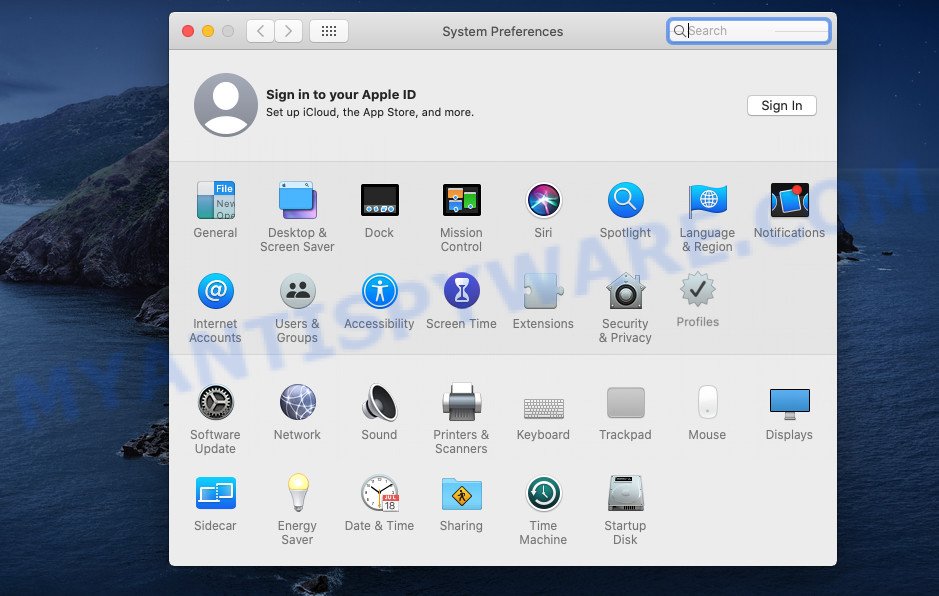
In System Preferences, click Profiles, then select a profile related to AssistiveMode.
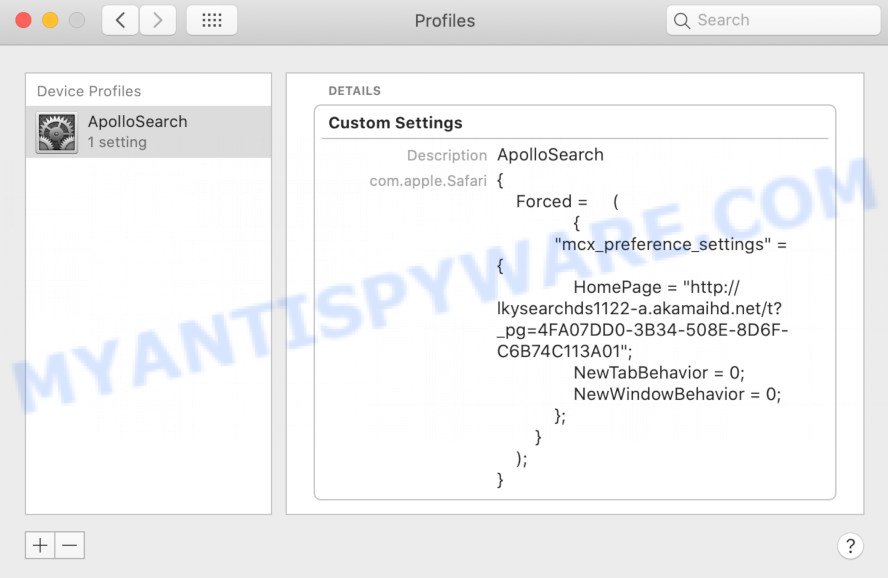
Click the minus button ( – ) located at the bottom-left of the Profiles screen to remove the profile.
Note: if you do not see Profiles in the System Preferences, that means there are no profiles installed on your Mac computer, which is normal.
Uninstall AssistiveMode associated software by using the Finder
One of the first things to attempt for removal of adware is to check your Mac computer installed programs screen and look for undesired and dubious apps. If there are any software you do not recognize or are no longer using, you should uninstall them. If that doesn’t work, then you may need to use malware removal tool such as MalwareBytes Free.
Open Finder and click “Applications”.
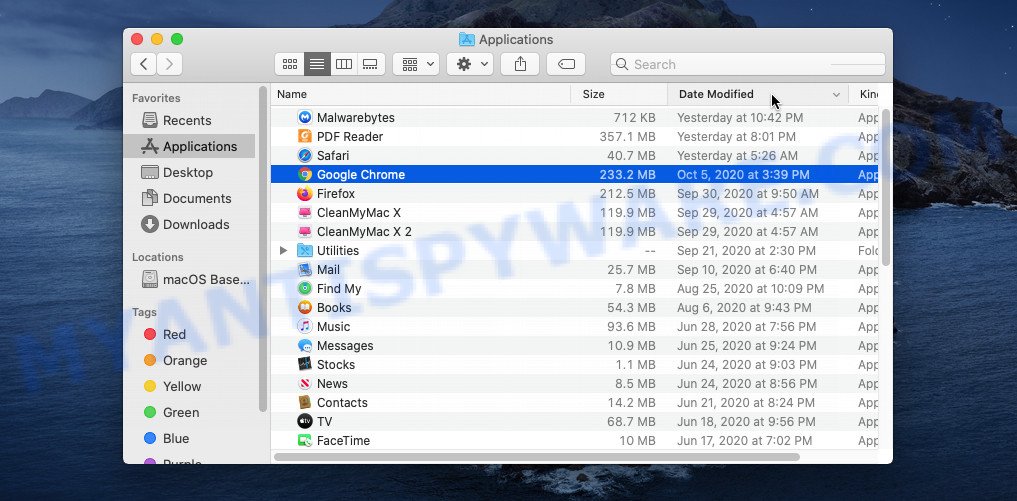
Carefully browse through the list of installed programs and remove all dubious and unknown applications.
Once you have found anything suspicious that may be the AssistiveMode or other potentially unwanted program, then right click this application and select “Move to Trash”. Once complete, Empty Trash.
Remove AssistiveMode related files and folders
Now you need to try to find AssistiveMode related files and folders, and then delete them manually. You need to look for these files in certain directories. To quickly open them, we recommend using the “Go to Folder…” command.
AssistiveMode creates several files, these files must be found and removed. Below is a list of files associated with this unwanted program.
- /Library/LaunchDaemons/com.AssistiveMode.system.plist
- ~/Library/LaunchAgents/com.AssistiveMode.service.plist
- /Library/Application Support/.(RANDOM)/System/com.AssistiveMode.system
- ~/Library/Application Support/.(RANDOM)/Services/com.AssistiveMode.service.app
Some files created by AssistiveMode are hidden from the user. To find and delete them, you need to enable “show hidden files”. To do this, use the shortcut CMD + SHIFT + . Press once to show hidden files and again to hide them. There is another way. Click Finder -> Applications -> Utilities -> Terminal. In Terminal, paste the following text: defaults write com.apple.finder AppleShowAllFiles YES

Press Enter. Hold the ‘Option/alt’ key, then right click on the Finder icon in the dock and click Relaunch.
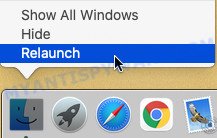
Click on the Finder icon. From the menu bar, select Go and click “Go to Folder…”. As a result, a small window opens that allows you to quickly open a specific directory.

Check for AssistiveMode generated files in the /Library/LaunchAgents folder

In the “Go to Folder…” window, type the following text and press Go:
/Library/LaunchAgents
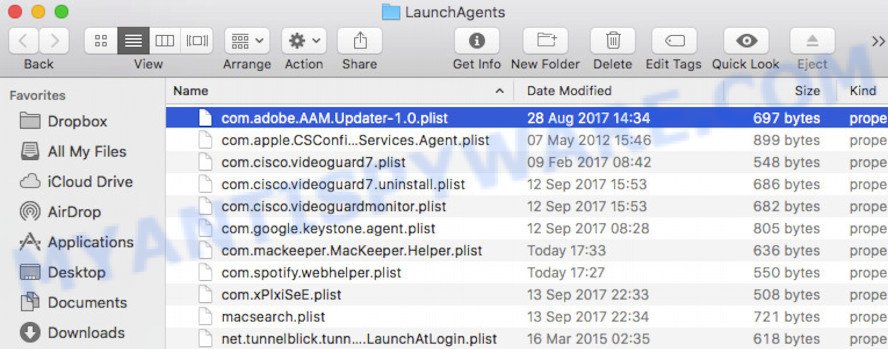
This will open the contents of the “/Library/LaunchAgents” folder. Look carefully at it and pay special attention to recently created files, as well as files that have a suspicious name. Move all suspicious files to the Trash. A few examples of files: com.machelper.plist, com.net-preferences.plist, com.AssistiveMode.service.plist, com.google.defaultsearch.plist, , installapp.plist, search.plist and macsearch.plist. Most often, adware, potentially unwanted programs and browser hijackers create several files with similar names.
Check for AssistiveMode generated files in the /Library/Application Support folder

In the “Go to Folder…” window, type the following text and press Go:
/Library/Application Support
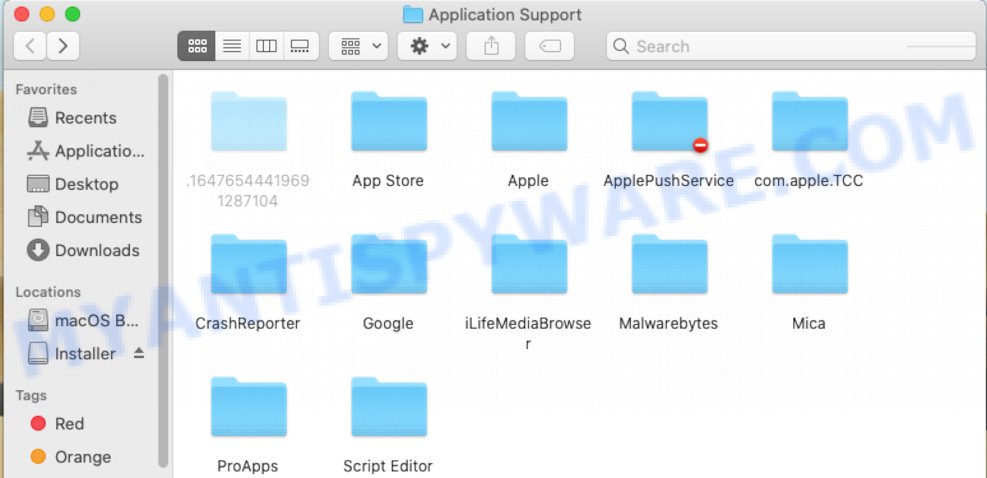
This will open the contents of the “Application Support” folder. Look carefully at its contents, pay special attention to recently added/changed folders and files. Check the contents of suspicious folders, if there is a file with a name similar to com.AssistiveMode.system, then this folder must be deleted. Move all suspicious folders and files to the Trash.
Check for AssistiveMode generated files in the “~/Library/LaunchAgents” folder

In the “Go to Folder…” window, type the following text and press Go:
~/Library/LaunchAgents

Proceed in the same way as with the “/Library/LaunchAgents” and “/Library/Application Support” folders. Look for suspicious and recently added files. Move all suspicious files to the Trash.
Check for AssistiveMode generated files in the /Library/LaunchDaemons folder
In the “Go to Folder…” window, type the following text and press Go:
/Library/LaunchDaemons

Carefully browse the entire list of files and pay special attention to recently created files, as well as files that have a suspicious name. Move all suspicious files to the Trash. A few examples of files to be deleted: com.installapp.system.plist, com.search.system.plist, com.machelper.system.plist, com.AssistiveMode.system.plist and com.macsearch.system.plist. In most cases, potentially unwanted programs, adware and browser hijackers create several files with similar names.
Scan your Mac with MalwareBytes
You can remove AssistiveMode associated files automatically through the use of MalwareBytes Anti Malware (MBAM). We advise this free malware removal utility because it can easily remove browser hijackers, adware software, toolbars and potentially unwanted programs with all their components such as files, folders and system entries.
Download MalwareBytes AntiMalware (MBAM) on your MAC system by clicking on the following link.
20916 downloads
Author: Malwarebytes
Category: Security tools
Update: September 10, 2020
When the downloading process is done, close all windows on your Apple Mac. Further, run the saved file. Follow the prompts.
The MalwareBytes Free will automatically run and you can see its main window similar to the one below.
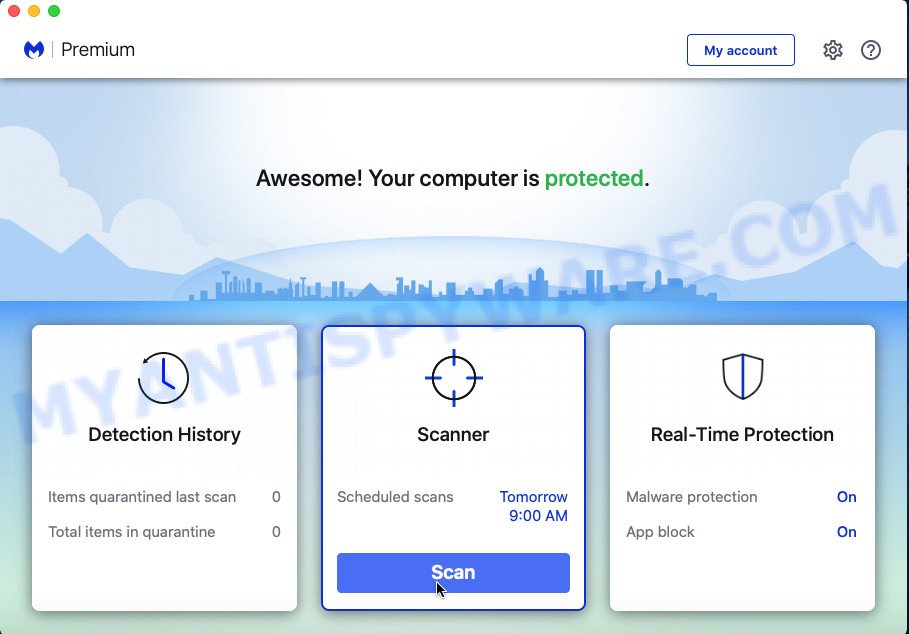
Next, press the “Scan Now” button to find AssistiveMode . A system scan can take anywhere from 5 to 30 minutes, depending on your machine. When a malware, adware or potentially unwanted applications are found, the count of the security threats will change accordingly. Wait until the the checking is done.

After MalwareBytes has finished scanning, MalwareBytes will produce a list of unwanted software and adware. In order to remove all threats, simply press the “Quarantine” button.
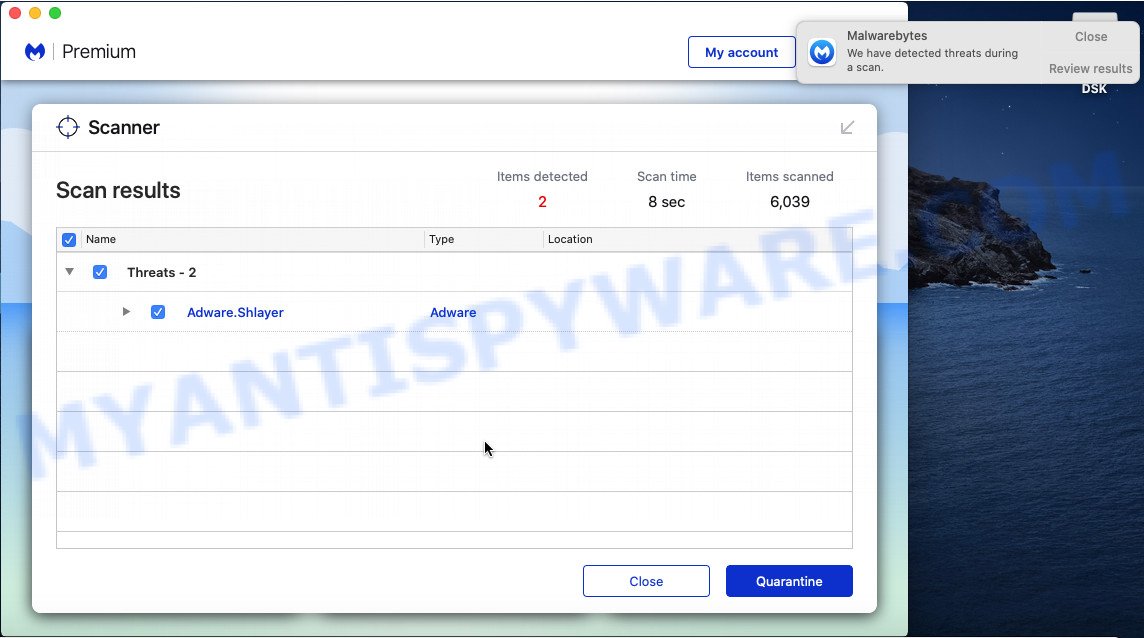
The MalwareBytes Anti Malware will begin to delete AssistiveMode .
Remove AssistiveMode from Safari, Chrome, Firefox
If you’re still getting AssistiveMode adware, then you can try to delete it by deleting malicious add-ons.
You can also try to remove AssistiveMode adware software by reset Chrome settings. |
If you are still experiencing issues with AssistiveMode adware software removal, you need to reset Mozilla Firefox browser. |
|
How to stay safe online
It’s important to run ad-blocking programs such as AdGuard to protect your machine from harmful websites. Most security experts says that it’s okay to block advertisements. You should do so just to stay safe! And, of course, the AdGuard can to stop misleading and other unwanted web pages.
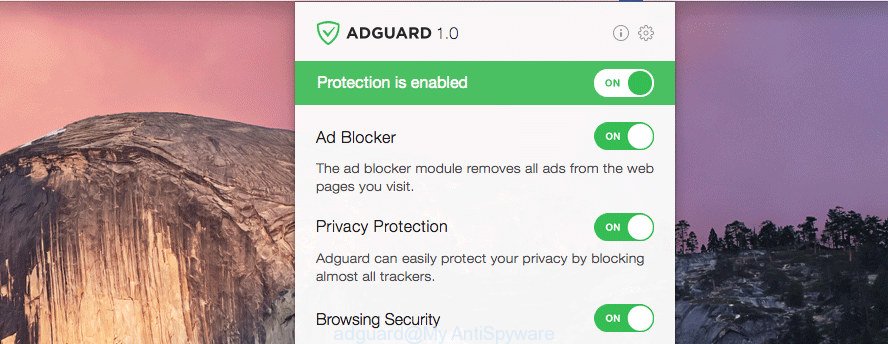
Download AdGuard on your machine from the link below.
3731 downloads
Author: © Adguard
Category: Security tools
Update: January 17, 2018
When the downloading process is complete, run the downloaded file. The “Setup Wizard” window will show up on the computer screen.
Follow the prompts. AdGuard will then be installed. A window will show up asking you to confirm that you want to see a quick instructions. Click “Skip” button to close the window and use the default settings, or click “Get Started” to see an quick guide that will help you get to know AdGuard better.
Each time, when you launch your MAC system, AdGuard will start automatically and stop unwanted pop ups, block malicious and misleading web-pages.
Finish words
Now your Apple Mac should be clean of the AssistiveMode adware. We suggest that you keep MalwareBytes (to periodically scan your MAC OS for new adware softwares and other malicious software) and AdGuard (to help you stop unwanted pop ups and malicious web sites). Moreover, to prevent any adware software, please stay clear of unknown and third party apps.
If you need more help with AssistiveMode related issues, go to here.

